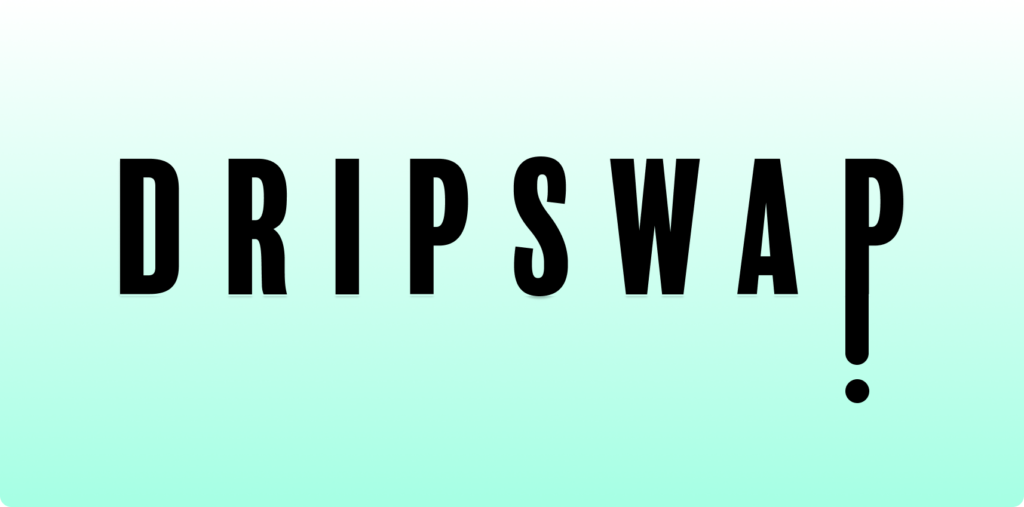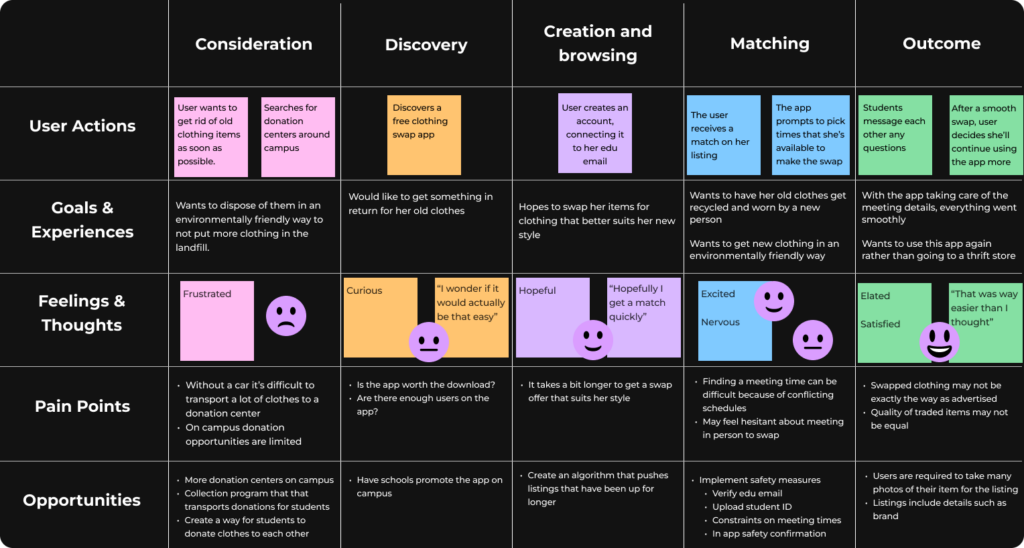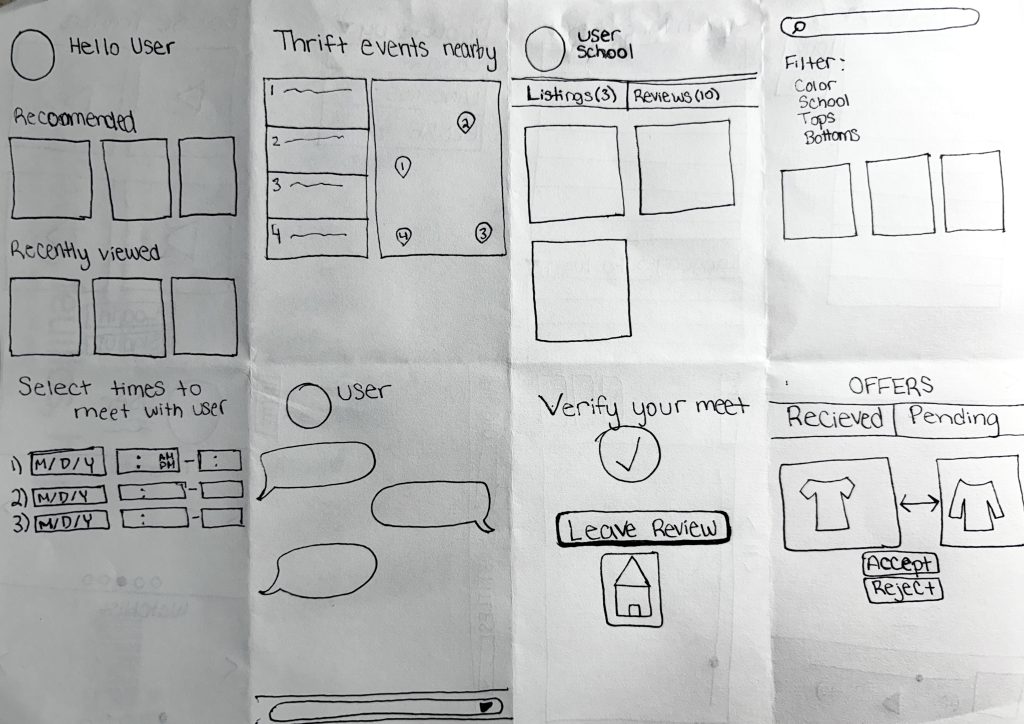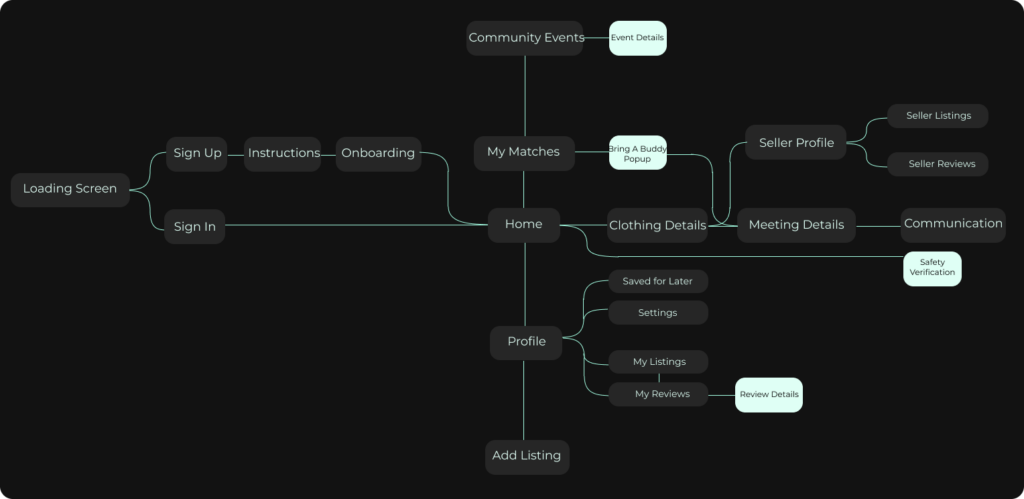DripSwap
Clothing swaps to foster community and sustainability.
Purpose
My team and I worked to produce a digital product that centers collective action rather than solving a commercial problem. We decided to create a clothing swap app for university students. Fostering community was my first priority during creation of the app.
Duration
Nov ’23 – Dec ’23
My roles
User researcher
UX Designer
Prototyping

Research Summary
There is an estimated 11.3 million tons of textile waste yearly in America alone.
4% of Gen Z and 57% of millennials said sustainability is important to them, yet they’re the prime consumers of fast fashion.
The app is designed specifically for Graduate and Undergraduate students at the George Washington University. Of these students:
About 31% of students at GWU are aged 18-21 and about 54% of students at GWU are aged 22-34
The majority (85%) of students at GWU fall under the age range that cares about sustainability but still consumes fast fashion, making it a great place to target
How might we encourage students on college campuses to trade or donate their clothing to each other to foster a community of sustainably conscious students?
I interviewed potential users about their experiences shopping and selling second-hand. I also asked about their feelings toward our general idea of trading clothes in person.
“Do you currently shop or sell second hand? If not, how do you dispose of old clothing?”
Purpose: Find what alternatives already exist and what the most commonly used are
Students prefer the method of using apps for buying and selling secondhand. There are some in person thrift events on campus, but they’re rare and don’t see any signage/ads.
“What was your experience like using a secondhand app?”
Purpose: Uncover problem areas when using an already existing product
Technology has made people feel more positively towards getting secondhand clothing. The most common complaints were slow message responses and shipping times.
“Describe your feelings toward trading clothes instead of paying. How would you feel about meeting up with people in person?”
Purpose: Learn what user concerns would arise from possible solutions
Safety is a huge concern that would need to be addressed. Swapping is a better alternative than to paying cash for items.
Design Thinking Strategies
I utilized multiple design thinking strategies to recognize gaps in my knowledge, identify with the user base, and discover what platforms already existed to make ours stand out.
Competitive analysis
Depop, Facebook Marketplace, and Postmark are three key competitors. The team drew inspiration from the UI of these apps, but our product functionality is set apart since our app functions locally and the goal is for users to swap clothing rather than buy and sell.
Empathy Mapping
There is a demand for the app, but there are safety concerns regarding in-person meetups. We create ways to solve this in the app, such as having review sections, post-meetup safety verifications, and requiring a valid university email to sign up.
Assumption mapping
Students care about thrifting, and there are already on-campus thrifting opportunities. These opportunities are best suited for acquiring new clothes rather than getting rid of old clothes. The only easy way to do the latter is to donate.
Persona creation
The primary user base will consist of college students who most likely enjoy fashion, have limited time to shop at in-person stores, and would benefit from opportunities to save money.
Journey Mapping
To clarify the idea further, I asked myself what the user’s experience would be while using the app. Journey mapping helped define the ideal user experience.

Development
Some unique features identified by sketching were:
- Post, in-app safety verification
- Pop-up with suggested safety measures
- Select meeting time availability
- Profile reviews

Wireframes
User Flow


How Does DripSwap Work?
- Students sign up with their university-granted emails and verify their access to the account.
- After creating a profile, users can browse local listings for clothing items and thrift events.
- When ready to swap or donate, users create a listing for their attire. Here, they fill in physical descriptions of the item and choose whether to swap or give it away.
- After viewing a listing that they are interested in, users can create trade offers with their own listings, which then get sent to the owner of the original listing.
- If the offer is accepted, both parties choose times and on-campus locations where they are available to meet.
- After the agreed-upon meeting time, both users log back into the app, where they confirm that the meeting went smoothly and safely.
Impact
The collective action app provides GWU, the greater college community, and thrifters opportunities to:





